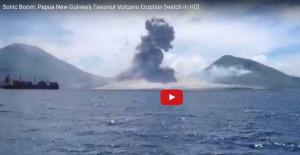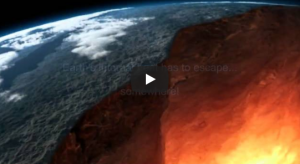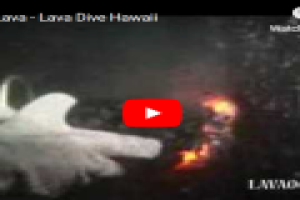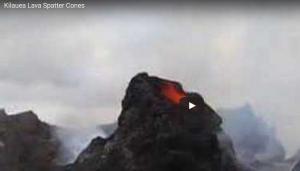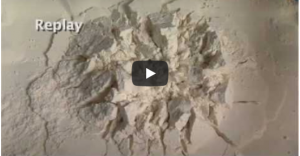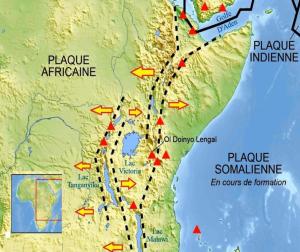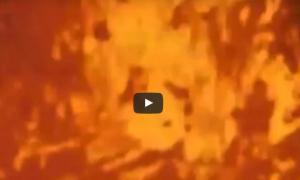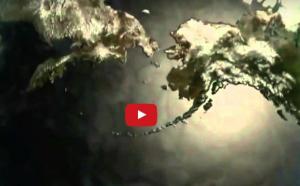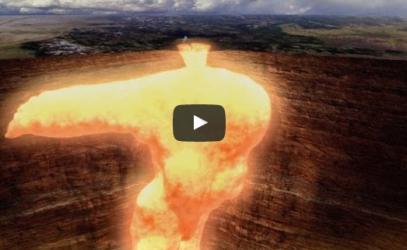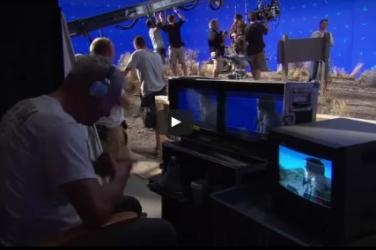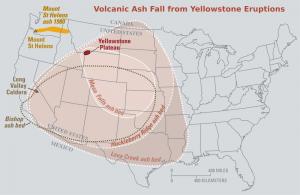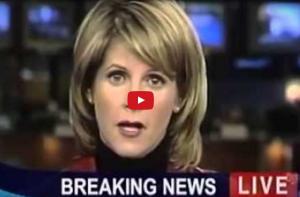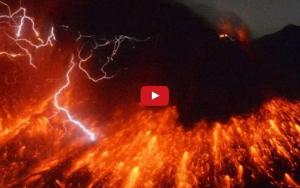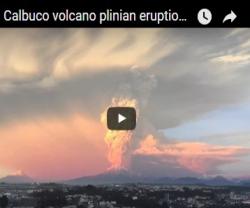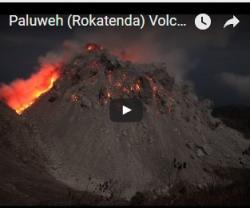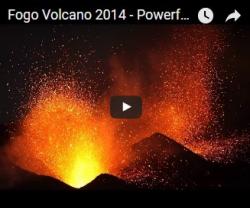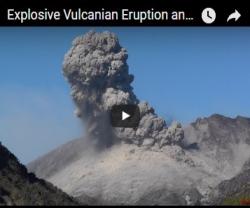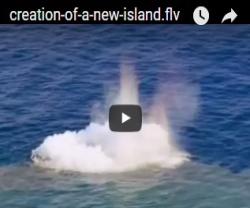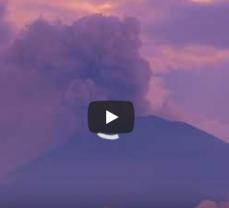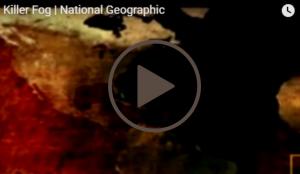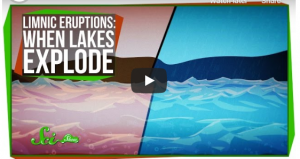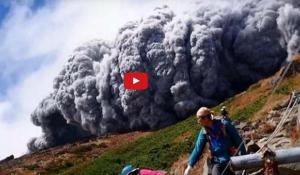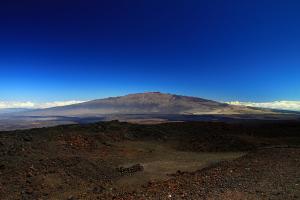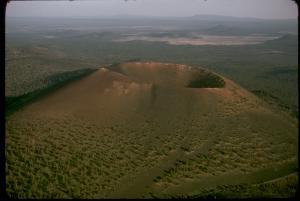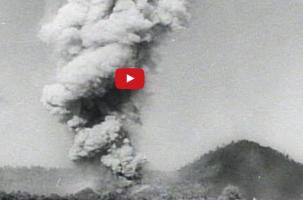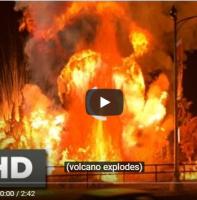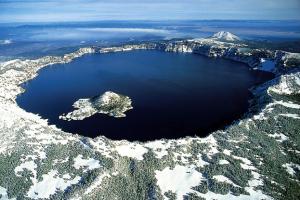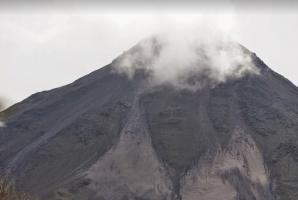Volcanoes
Daily Dose of Destruction
The next video is very dramatic and a great way to introduce volcanoes.
Volcanoes are openings in the Earth's crust allowing magma (hot molten rock) to form layers of lava, ash, and tuff which in turn eventually form large mountains. Most volcanoes are dormant and there are about 600 volcanoes that are active. The most active volcano in the world is Kilauea, in Hawaii. Kilauea has had eruption periods of over 100 years. Kilauea has been erupting since 1983.
There are three types of lava. Remember that lava is hot molten rock running on the surface of the Earth. Pahoehoe lava moves like thick honey. Aa lava moves in crumbling blocks of hot rock. Pillow Lava occurs beneath the ocean where it cools off very quickly.
Magma is less dense than the surrounding rock. If a substance is less dense than the surrounding area, it can float or rise. Because magma is less dense than solid rock it rises through the cracks that are commonly found inside the Earth's crust. Lava flows out of vents creating layers that form craters. Craters are the steep-walled openings around a volcano's vents.

|
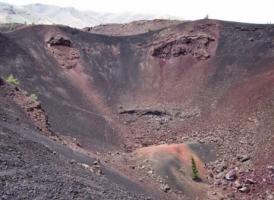 |
Calderas are formed as large sections of rock and dirt fall into an empty magma chamber. After a volcano erupts, many times it pretty much completely empties out its magma chamber. Once the chamber is empty, the rock and dirt above it lack structural support. Gravity pulls the dirt and rock into the magma chamber creating a large hole in the volcano. Yellowstone National Park sits inside an extremely large caldera.
The following video demonstrates how calderas are formed.
Volcanoes occur mostly where gigantic blocks of Earth's lithosphere, called tectonic plates, move around. These plates slide past each other, crash into each other and move away from each other.
Boundaries, where plates move apart, are called divergent boundaries. Divergent boundaries stretch the crust making it thinner, and forming cracks and valleys. The cracks and valleys are called rifts. Magma fills in the rifts forming ridges. There is a huge rift in Africa called the Great African Rift. As two parts of Africa move apart water will fill in the low spots creating new seas and eventually large oceans. There is a really long ridge found in the middle of the Atlantic Ocean called the Mid-Atlantic Ridge. We will learn more about these ridges in another chapter about the Theory of Plate Tectonics.
This next video shows a rift that opened up in 1973 in Iceland.
When tectonic plates come together it is called a convergent boundary. The largest mountain ranges like the Cascades or the Andes are caused because of these convergent boundaries. Convergent boundaries form the most dangerous types of volcanoes. They are formed when one plate dives below another plate, where it melts. That melted magma rises to the surface causing very explosive volcanoes. These areas are called subduction zones. At the edges of these subducting plates, you will also find some of the deepest places on Earth called trenches. The Mariana Trench is almost 11,000 meters deep. That is about 7 miles and is considered the deepest place on Earth. Earthquakes also happen often around these subducting plates. There are so many volcanoes and earthquakes around the Pacific Plate that they gave it, its very own name; The Ring of Fire.
Another popular place for volcanoes to form is at places called hot spots. Hot spots are areas where there is a really, really, really hot section of the mantle that allows for the crust to melt. As the crust turns to magma it rises to form hot-spot volcanoes. Hot spots don't happen next to plate boundaries but rather are intraplate. The Hawaiian volcanoes and the Yellowstone volcano are hot spot volcanoes. Hot spots tend to stay in the same location and as the plate moves over the top of the hot spot it will form a new volcano, forming lines of volcanoes, called volcanic chains. You can see from the pictures below, that volcanoes are older the further away from the hot spot they travel.

|
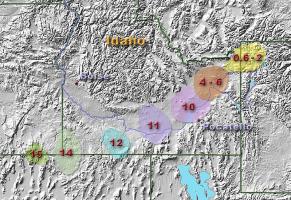 |
If you haven't had a chance to see the movie "2012," it is a great disaster movie. Below is the section of the movie that shows Yellowstone erupting.
https://photos.app.goo.gl/kTNmvzAr5duc5nyM2
|
This video demonstrates why the Yellowstone eruption might be very large. |
This video demonstrates some of the tech used in making 2012.
|
Recently there have been many blogs and websites that have discussed a possible Yellowstone eruption. One of the signs that an eruption is about to happen is when an area gets what is known as an earthquake swarm, hundreds, or even thousands of little earthquakes. Below is a graph that shows the increase in earthquake activity and an image of ash beds of historical eruptions.
Large volcanic eruptions can cause worldwide damage and danger. Below is a TedEd video that discusses the consequences of supervolcanoes.
The following movie is a very good one to watch. It demonstrates actual scientific possibilities regarding how big a Yellowstone eruption can get. The science behind this dramatization is pretty accurate.
Section 2: Types of Volcanic Eruptions
Daily Dose of Destruction
This volcano in Japan erupted on February 5, 2016. The light show is fantastic.
The type of eruption a volcano will have really depends on the water and gas content of the magma. If the magma is basaltic, then it would contain less silica and isn't as thick. Gas, therefore, escapes easier from basaltic magma. The magma will tend to be more runny, like the pahoehoe and aa lava that you would see in Hawaii. The eruptions would not be as explosive with basaltic magma compared to granitic magma. Granitic magma contains a bunch of silica, making it very thick and trapping gas easily. Granitic magma also contains more water content which will allow steam pockets to build up. Granitic magma can create very explosive volcanic eruptions.
Below is a list of types of eruptions and their names.
|
|
|
|
|
|
|
|
Signs of Pending Eruptions
Before a volcano erupts, there are signs that it is about to. Seismic activity tends to increase and so does the intensity. This happens because magma is rising inside the throat of the volcano. Gas emissions also increase. Many times you will find bulges on the sides of the tops of volcanoes as they swell with the pressure. The volcano's dome can also become larger.
There is another rare and extremely deadly volcanic eruption type called a limnic eruption. This eruption type is not your traditional eruption. It is all about the gas that is trapped, built up, and then released into the atmosphere. Because the carbon dioxide gas is denser than normal air, it sinks and hovers close to the ground. Carbon dioxide is odorless and tasteless, so it is very difficult to know you are breathing it. Below is a video that talks about a limnic eruption that happened in Cameroon Africa, in 1986. This eruption killed 1746 people. There are only a few lakes in the world that have this limnic problem.
Section 3: Volcano Types
Daily Dose of Destruction
On September 27, 2014, 63 people died in this eruption as they were hiking. This is the actual video from the survivors.
There are three types of volcanoes: shield, composite, and cinder cone. Shield volcanoes usually erupt basaltic lava, so they are relatively quiet. Because of the pahoehoe lava, the slopes of a shield volcano are relatively flat and create broad gentle sloping sides, thus taking on the appearance of a shield. The Hawaiian islands are examples of shield volcanoes.
|
|
Cinder cone volcanoes throw chunks of lava high into the air. Cinder cones are formed from this tephra, a material that varies in size from ash to cinder to very large rocks. The cone shapes are steep-sided. As you travel eastern Arizona between Show Low and Round Valley you will see many cinder cone volcanoes. Sunset Crater in Flagstaff AZ is also a famous cinder cone volcano. These types of volcanoes are much smaller than shield and composite
|
|
|
Story Time: Imagine working on your ranch, when all of a sudden you feel the ground shake, hear explosions and see hot glowing rock being thrown out of a hole. Your ranch is flat and within 10 years there is a 1000-foot mountain on your property. That is what happened in 1943 to a rancher.
|
|
|
The third type of volcano is called a composite or a stratovolcano. These volcanoes are built by alternating the different types of eruptions and contain alternating layers of lava and tephra (rock fragments ejected by a volcano, ash, and tuff. The stuff). These volcanoes usually have violent eruptions. They are found near subduction zones and contain silica-rich magma. The word Strato means very high in the sky. These volcanoes are some of the tallest mountains along the Pacific Ring of Fire.
|
|
|
Now that you are a volcanologist extraordinaire, complete the following research assignment. You are going to research some very famous volcanoes and their eruptions.
If you are a student at Snowflake, Holbrook, or Heber click SUSD5 student version of the Famous Volcanoes assignment.
Purchase this Famous Volcanoes assignment at Teachers Pay Teachers for $1.75.
Purchase an alternative volcano vocabulary word search and crossword puzzle at Teachers Pay Teachers for only $0.50.










